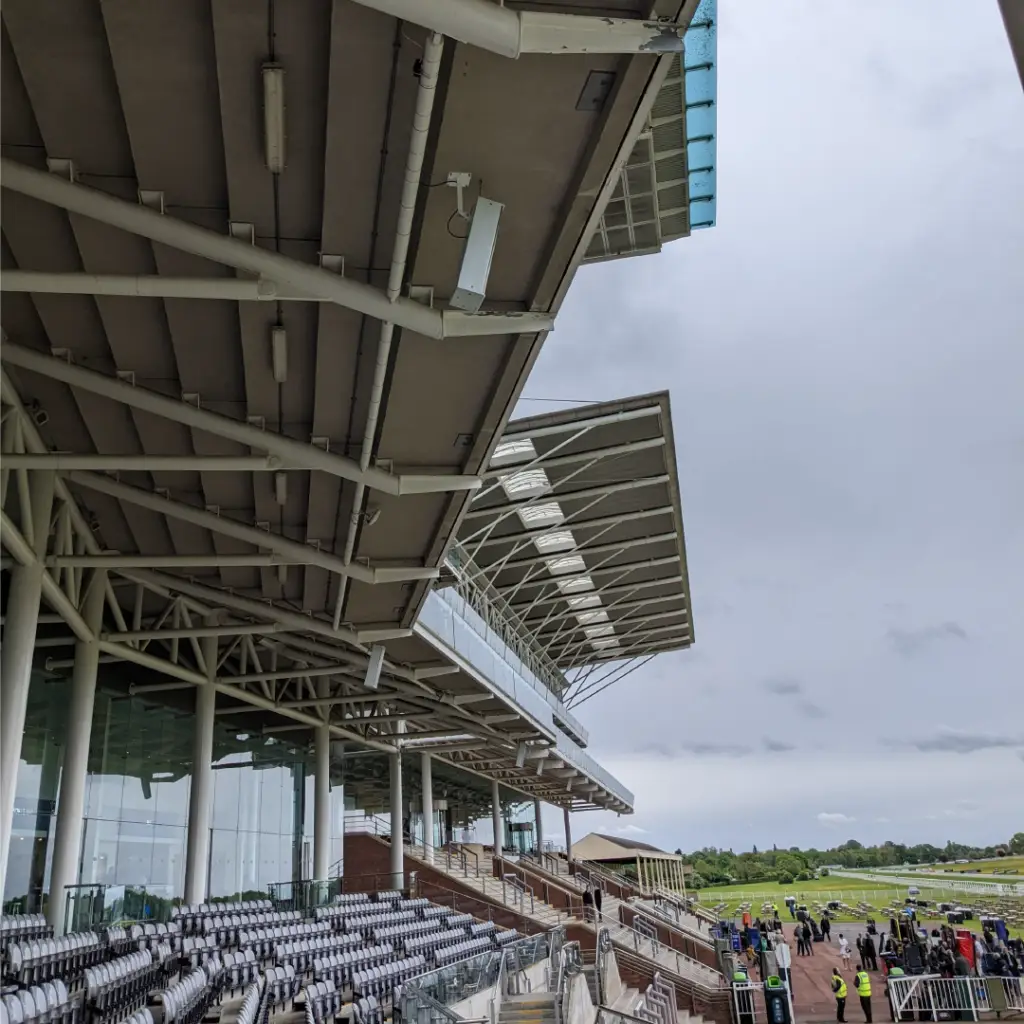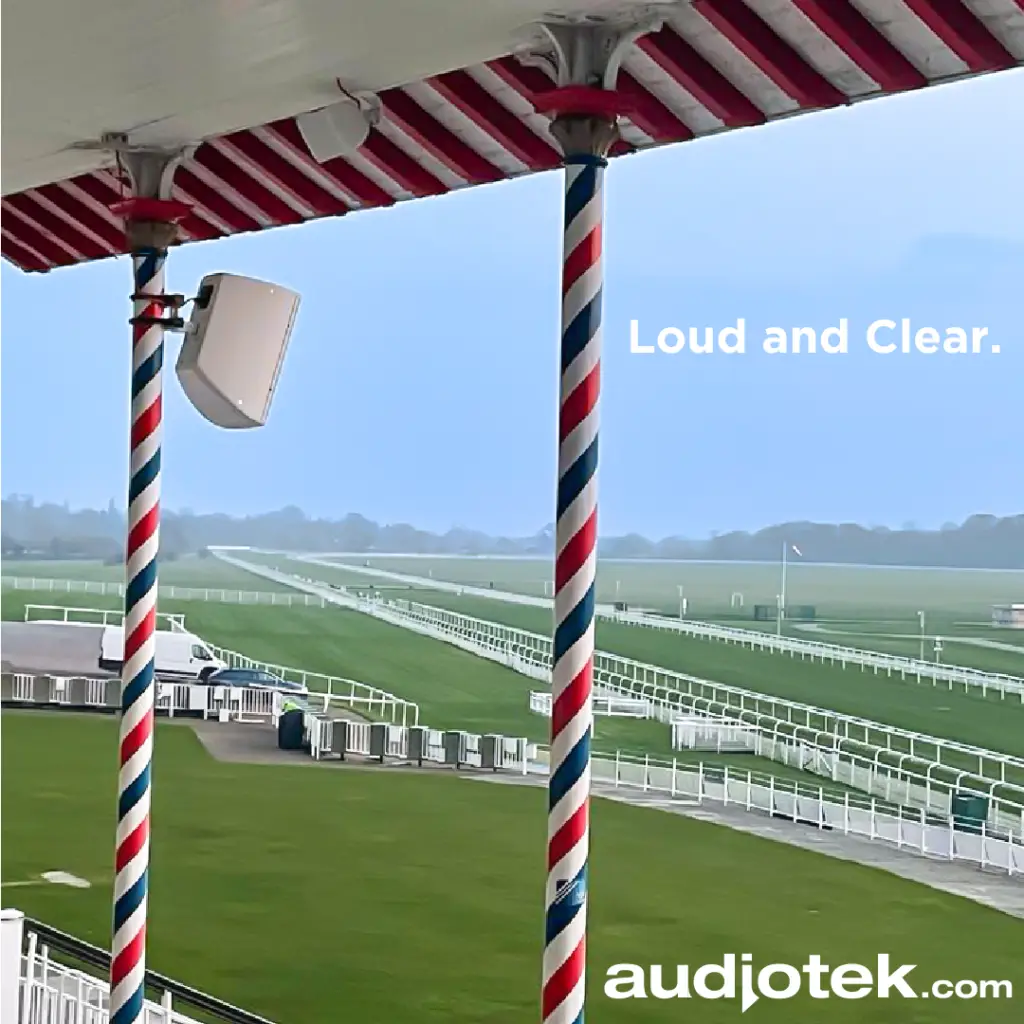The Problem with PA Systems
PA systems can make a break an event, and never was the truer than at a racecourse. These sporting arenas are vibrant full of energy (and quite often booze) where the thrill of the competition is palpable, and effective communication is key to enhancing the patron experience. However, many racecourses still rely on outdated Public Address (PA) systems that fail to meet modern standards of audio clarity and reliability. These antiquated systems significantly detract from the enjoyment and engagement of spectators, whether they are in the grandstand, outdoor hospitality areas, or inside the beer tent. Fortunately, advancements in audio system design are revolutionizing how patrons connect with the action, no matter where they are on the course.
Sound Quality and Clarity
Old PA systems often struggle with poor sound quality, resulting in announcements that are garbled, distorted, or unintelligible. This can be particularly frustrating in a racing environment where timely and clear information about race progress, results, and other important updates is crucial. Modern PA systems, on the other hand, are designed with advanced audio processing technologies that ensure crystal-clear sound. High-fidelity speakers and strategically placed microphones enhance clarity, allowing every word to be heard with precision, whether you’re in the bustling grandstand or a quieter hospitality area.
Volume Control and Distribution
Outdated PA systems frequently suffer from inconsistent volume levels, which can either be too loud and overwhelming or too soft to be heard over the ambient noise of the racecourse. New systems utilize sophisticated volume control technologies that automatically adjust the sound levels based on the surrounding noise environment. This means patrons can enjoy announcements at an optimal volume, enhancing their experience without causing discomfort or missing important information.
Ambient Noise Interference
Racecourses are inherently noisy places, with the roar of engines, cheering crowds, and general commotion. Older PA systems often fail to cut through this ambient noise, leading to missed announcements and frustrated spectators. Modern systems incorporate noise-cancelling technologies and directional speakers that focus sound directly towards the audience, minimizing interference and ensuring that announcements are clear and audible even in the noisiest environments.
Overuse and Message Fatigue
An overabundance of announcements can lead to patrons tuning out and ignoring important messages. Outdated PA systems often contribute to this issue by lacking the ability to prioritize or filter messages effectively. Newer systems come equipped with smart scheduling features that ensure only essential announcements are broadcasted, reducing message fatigue, and maintaining the attention of the audience.
Technological Reliability
The reliability of PA systems is crucial, especially in high-stakes environments like racecourses. Older systems are prone to technical failures, such as power outages and malfunctions, which can leave patrons without critical updates. Modern PA systems are built with robust, fail-safe mechanisms and are regularly updated to ensure consistent performance. Backup systems and remote monitoring capabilities further enhance reliability, ensuring that communication remains uninterrupted.
Accessibility Enhancements
Traditional PA systems often fall short in accommodating patrons with hearing impairments. Modern systems, however, are designed with inclusivity in mind. They can integrate with hearing aid technologies and provide visual aids, such as captioning on screens, ensuring that all patrons have access to essential information regardless of their hearing ability.
Security and Privacy
Outdated PA systems are more vulnerable to unauthorized access and hacking, which can lead to the dissemination of false or disruptive information. Modern systems feature advanced security protocols, including encryption and authentication measures, to protect against such threats and ensure the integrity of communications.
Environmental Considerations
Older PA systems can be energy-intensive and environmentally unfriendly. In contrast, new systems are designed with energy efficiency in mind, reducing the carbon footprint of the racecourse. Additionally, modern audio equipment is often manufactured with recyclable materials and is subject to more environmentally sustainable disposal practices.
Conclusion
Outdated PA systems at racecourses significantly impact the patron experience by delivering poor sound quality, inconsistent volume, and unreliable performance. In contrast, modern audio system designs offer clear, consistent, and inclusive communication that enhances engagement and enjoyment for all patrons, whether they are in the grandstand, hospitality areas, or the beer tent. By embracing these technological advancements, racecourses can ensure that every spectator feels connected to the action, elevating the overall experience, and making every event more memorable and enjoyable.

Chris Kmiec
A self confessed AV nerd, Chris is a graduate of Surrey University and has over 15 years experience with commercial AV design for venues of all types in every corner of the world.


